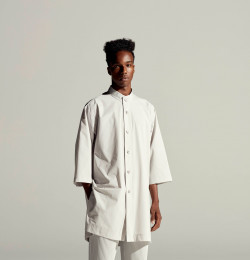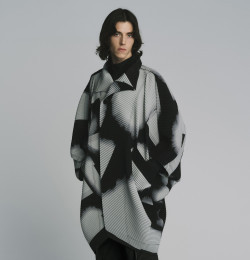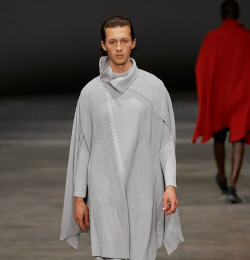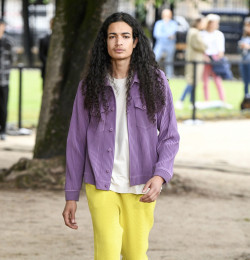

Homme Plissé Issey Miyake
About
HOMME PLISSÉ ISSEY MIYAKE is created for the lifestyle of modern men with the intent to liberate the way they dress. The brand was established in 2013 as a result of Issey Miyake and his team’s research on pleating since 1988.
Designed for people to mix and match in any way to express their originality, the garments are lightweight, confortable, wrinkle-resistant, and can be stored and carried in compact sizes. Today the brand continues to enliven everyday living as it is made for every occasion in life.
The Look
Miyake's skill with fabric is rooted in his knowledge of traditional Japanese fabrics and fabric-production techniques. The ascendancy of denim in the sixties and seventies turned his attention to Japanese workwear fabrics: ticking stripe, heavy cottons, quilting. These he incorporated into his work both in their original form and in wonderfully elaborated forms, waffle textures, heavy coarse weaves, rich seersucker effects, wrinkled, crinkled, primitive pleating and occasionally smocked.
Combined with Miyake's sophisticated colour sense, the effect of all this sensuous texture was completely fresh. Textured fabrics when employed by other designers, tended to be conventionally rich - velvet, plain, panne or printed, brocade, damask, corduroy or applique work, embroidery or lace, nubbled or hairy tweed. Even when used in fresh unexpected ways other designers cannot compete with the fabrics Miyake has developed, which respond well to being intricately cut, seamed, darted and fitted. This is consistent with his vision. He says " I like to work in the spirit of the Kimono, between the body and the fabric there exists only an approximate contact."
He does not use the kimono itself as many Western designers do, to add a touch of exoticism. He merely borrows its attributes of ease, adaptability and respect for the fabric and the patterns and shapes in space with it can create when the body moves.
If he sounds serious about his design philosophy, we he is. But he also has a rich sense of humour which contributes substantially to his famous charm. He loves to make extravagant statements when he sends his models down the runway in shiny fibreglass breastplates, or perky nipples or polished wickerwork torso cages shaped like Samurai armour.
His use of wrapping and tying techniques for the fastening of his clothes is also based on Japanese tradition. The kimono has no closure and it closed by tying the obi around the waist.
He makes clothes like 18th century Buddhist priests, where patchwork rectangles were meant to suggest the humility of tatters, although they were actually stitched from the finest of antique brocades. Miyake refines and passes on the inherently Japanese vision. His loose, even formless clothes mock the perfect-toned "me decade" body, he makes fashion retrospective.
Perfumes
Official Social Media
Look Books from Homme Plissé Issey Miyake



Homme Plissé Issey Miyake Fashion Shows


